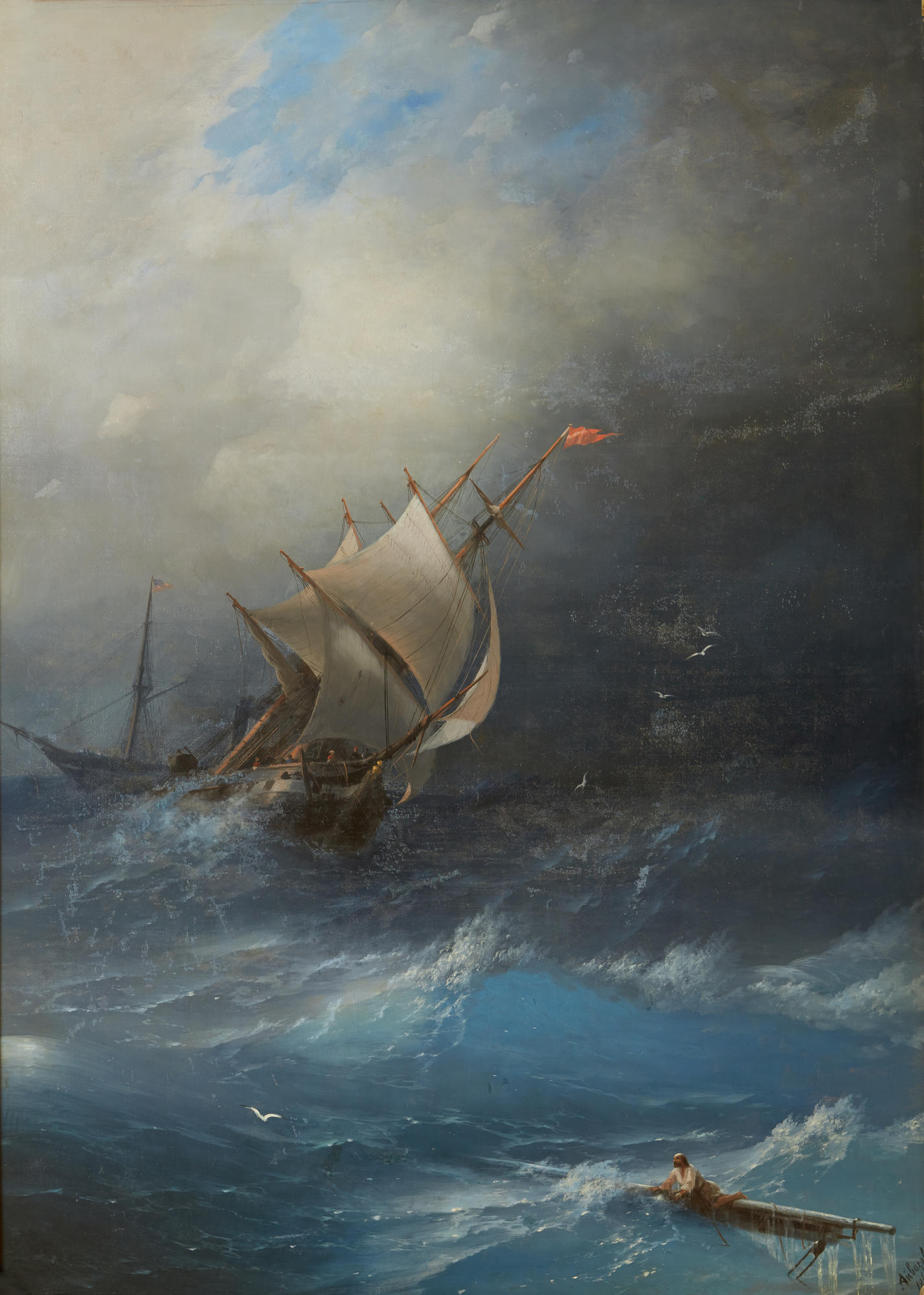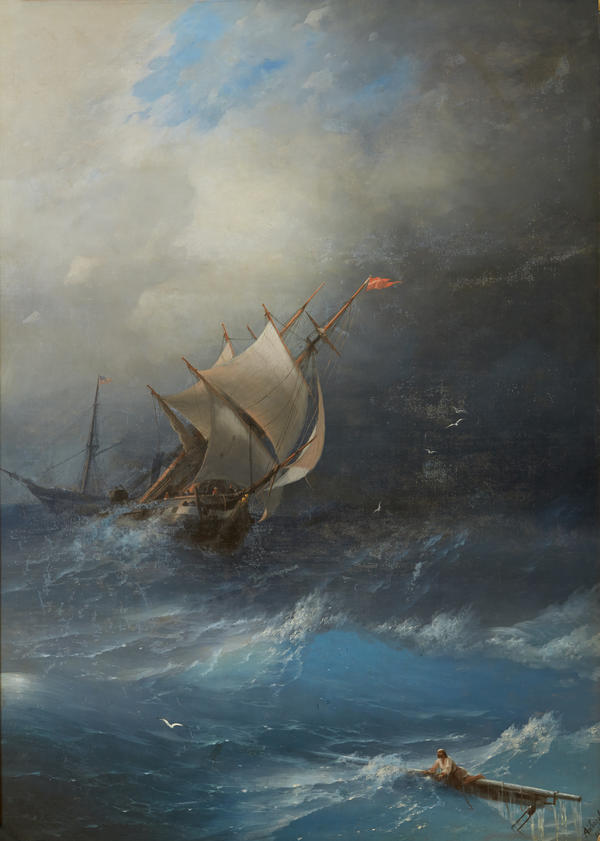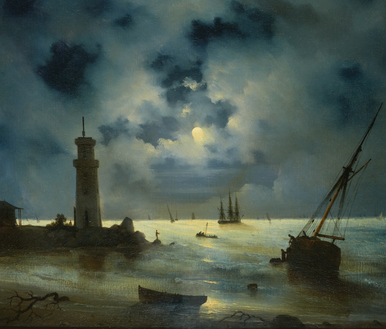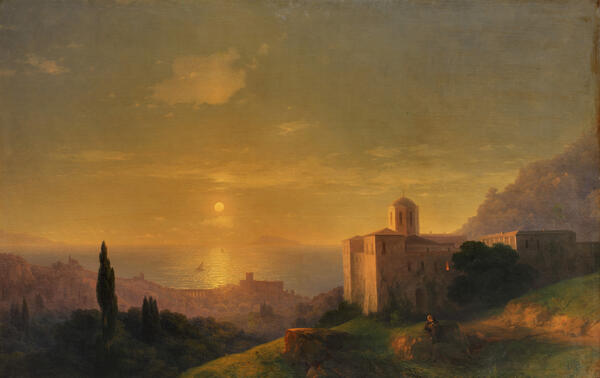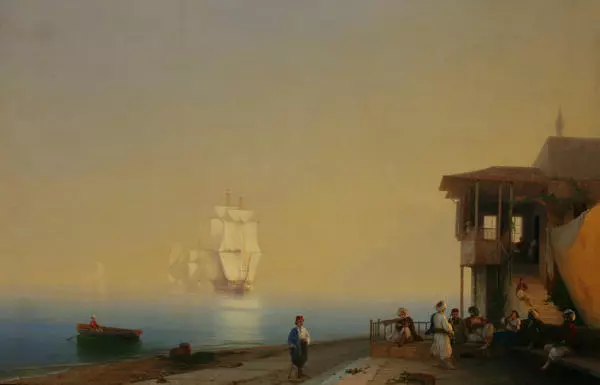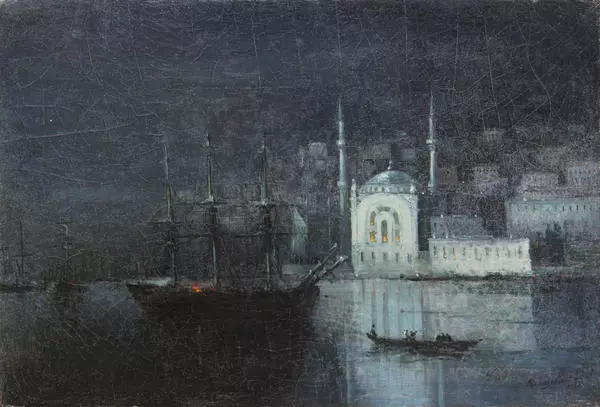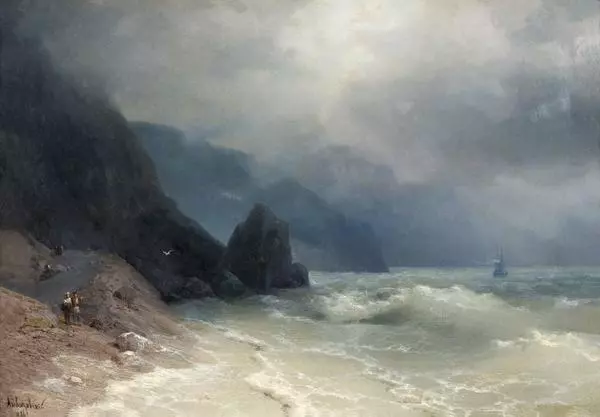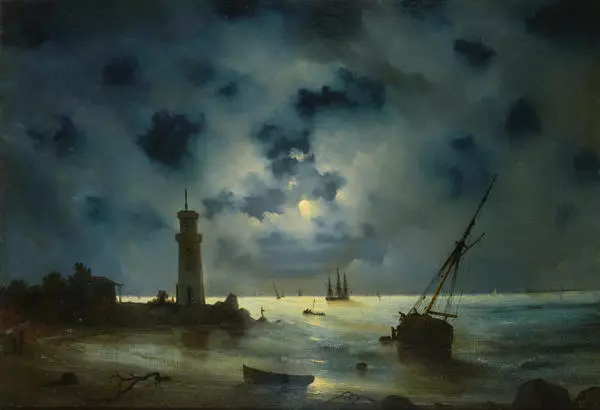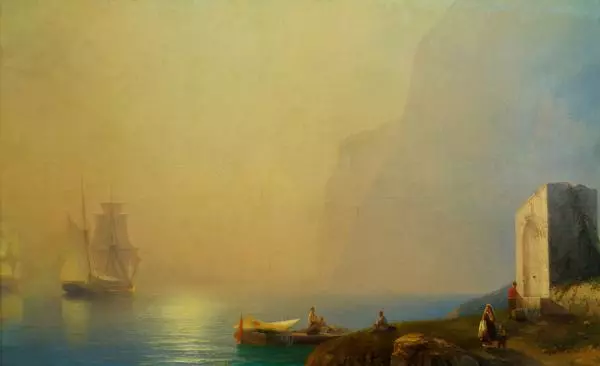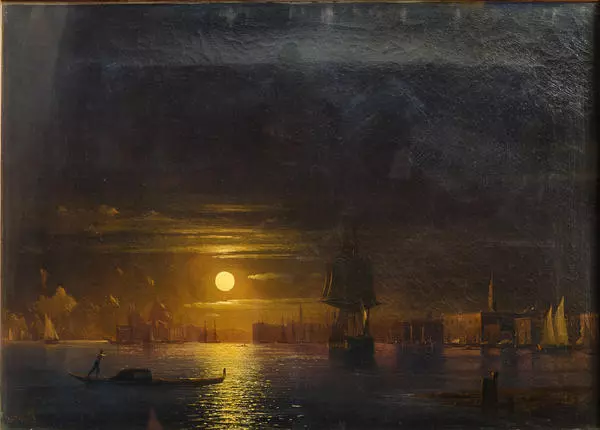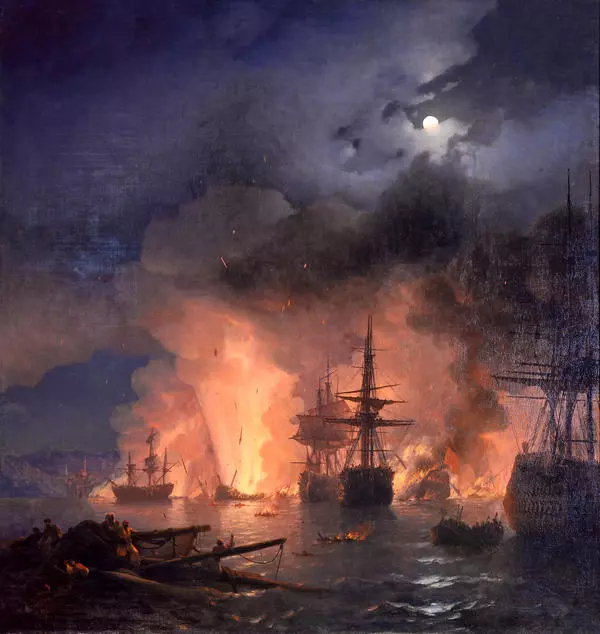The storm theme is frequent for the paintings by Ivan Aivazovsky. One of the first paintings of such kind is Shipwreck of 1837 depicting a group of people trying to save their lives in a rowboat. The artist carried his love to this tragic and dramatic theme through all his live. Aivazovsky was in love with nature and the elements, so in the history of Russian art, he remains the voice of vigorous, tameless sea — the calmness we can see in the paintings of Silvester Shchedrin, for example, was of no interest for Aivazovsky. Moreover, the artist had first-hand knowledge of storms and the elements.
Aivazovsky survived through one of the most frightful storms in Bay of Biscay in 1844. Then, the storm came down on a war ship, where young Aivazovsky was in training. The storm was so devastating that the press announced the ship wrecked and all its crew dead (including the artist). Aivazovsky himself liked to tell this story in the context of the anecdotic situation that occurred with his paintings in Paris. Based on the sad news about the death of the artist, Paul Duran-Ruel, the French art dealer, sold all the paintings e had at his disposal at on overvalued price. So, upon ‘coming back to life’, Aivazovsky made a pretty penny on his first storm.
Aivazovsky created the painting Ocean Storm in 1864 being in his prime. This rather gloomy piece is in contraposition to the famous Ninth Wave — a much more solemn painting illuminated by sunbeams. Here we can see the huge waves flinging the boat desperately trying to withstand the elements. A sole beam of light cuts through the overcast clouds and illuminates the stump, to which a man in a white shirt is clinging. Snow-white sea gulls are flying above the waves. At a distance, we can see a part of another ship with the sails taken in and with a flag on the mast.
The heavy sky, the cold colouring of the welter of the waves, ragged clouds and fluttering flag of the ship — all these details tell us about a severe and harsh wind. However, his romantic belief in life did not allow Aivazovsky to bring the tragic tension to complete despair, and in every painting of such kind, he always showed a ray of hope (a ‘silver lining’ in the darkest clouds). In this painting we can see, that people on the ship have already spotted the survivor and rushing to his rescue. This is very characteristic of Aivazovsky: in every storm, he always left a chance for survival for human beings.
Aivazovsky survived through one of the most frightful storms in Bay of Biscay in 1844. Then, the storm came down on a war ship, where young Aivazovsky was in training. The storm was so devastating that the press announced the ship wrecked and all its crew dead (including the artist). Aivazovsky himself liked to tell this story in the context of the anecdotic situation that occurred with his paintings in Paris. Based on the sad news about the death of the artist, Paul Duran-Ruel, the French art dealer, sold all the paintings e had at his disposal at on overvalued price. So, upon ‘coming back to life’, Aivazovsky made a pretty penny on his first storm.
Aivazovsky created the painting Ocean Storm in 1864 being in his prime. This rather gloomy piece is in contraposition to the famous Ninth Wave — a much more solemn painting illuminated by sunbeams. Here we can see the huge waves flinging the boat desperately trying to withstand the elements. A sole beam of light cuts through the overcast clouds and illuminates the stump, to which a man in a white shirt is clinging. Snow-white sea gulls are flying above the waves. At a distance, we can see a part of another ship with the sails taken in and with a flag on the mast.
The heavy sky, the cold colouring of the welter of the waves, ragged clouds and fluttering flag of the ship — all these details tell us about a severe and harsh wind. However, his romantic belief in life did not allow Aivazovsky to bring the tragic tension to complete despair, and in every painting of such kind, he always showed a ray of hope (a ‘silver lining’ in the darkest clouds). In this painting we can see, that people on the ship have already spotted the survivor and rushing to his rescue. This is very characteristic of Aivazovsky: in every storm, he always left a chance for survival for human beings.
